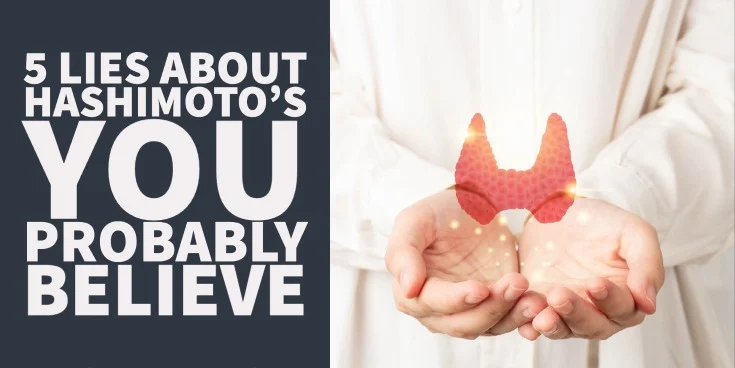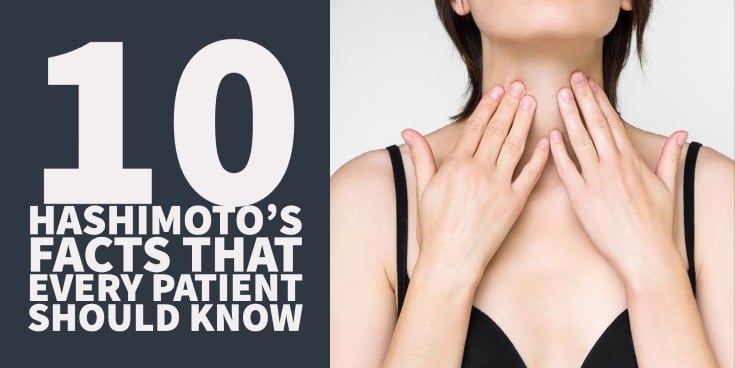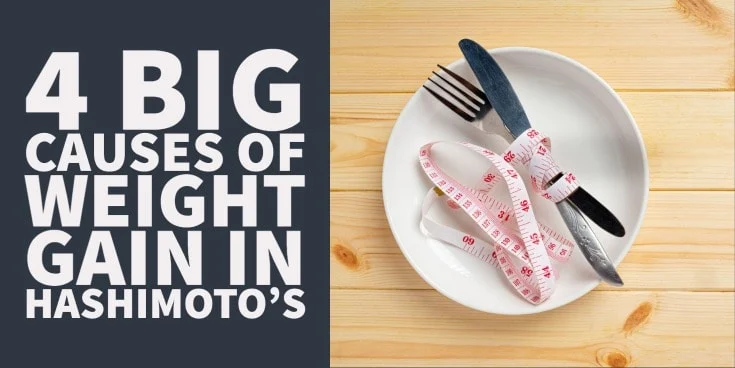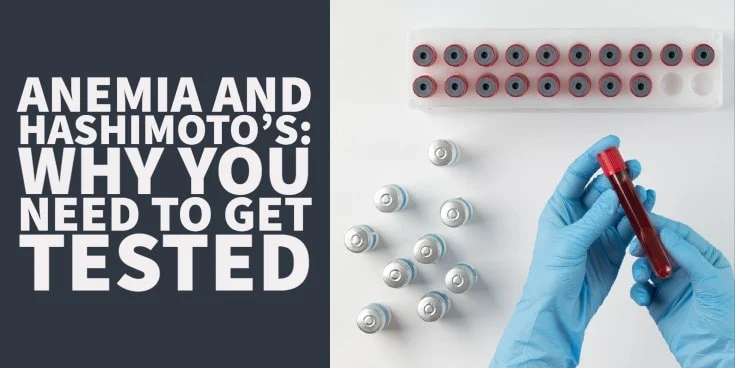Pretty much everyone loves bread so it can be a gut punch if you’ve been told that it’s something you should avoid if you have Hashimoto’s thyroiditis.
But is this actually true? Do you really have to avoid bread forever if you have Hashimoto’s?
Maybe not…
And it’s worth diving into this topic in more detail because there are definitely situations in which small sources of high-quality gluten may not be an issue for patients with Hashimoto’s.
The key is all about finding the right sources, though.
Because, let’s face it, going to the store and purchasing pretty much any standard wheat or bread is going to leave you feeling inflamed and is certainly not considered a high-quality source.
So what are these sources and are they worth exploring?
Let’s find out:
Gluten or Gluten Free: Which Option is Preferred for Hashimoto’s?
Before we jump into the various flours below it’s worth taking just a second to discuss the topic of gluten and how it relates to Hashimoto’s.
There’s no question that gluten can cause problems for many people who have Hashimoto’s.
When you look at the numbers a relatively small percentage of patients with autoimmune thyroiditis have Celiac disease (the number is around 1-3% (1)) and yet a much higher percentage of patients seem to have trouble with gluten, so what gives?
Well, what gives is a differentiation between two different gluten-intolerant states.
On one hand, we have the autoimmune disease known as Celiac disease which is a serious condition and results in the need to completely avoid gluten 100% of the time.
Patients with Celiac disease who fail to avoid gluten will be met with serious consequences such as malabsorption, multiple nutrient deficiencies, anemia, skin conditions, and much more (2).
Luckily, the crossover between Hashimoto’s and Celiac disease is quite small, only a couple of percent as I mentioned above.
A much larger percentage of patients with Hashimoto’s have what is referred to as non-celiac gluten sensitivity.
And this is a condition in which your body doesn’t react very well to gluten but the severity is less than that of Celiac disease if you do come into contact with it.
For this reason, patients with non-Celiac gluten sensitivity can often get away with eating bread even though it makes them feel unwell because the consequences are not as severe.
Even though that may be the case for you right now doesn’t mean it needs to be that way forever, though.
I’ve seen plenty of cases in which patients with Hashimoto’s react negatively to low-quality sources of bread and wheat but when they are introduced to higher-quality versions they do quite well.
This opens up a whole new world for patients with Hashimoto’s because it means that there may be a way for them to not only enjoy sources of bread and wheat but enjoy them without negative consequences like inflammation and gut-related side effects.
My experience suggests that non-Celiac gluten sensitivity may be just a temporary problem for many patients (3).
A temporary problem that can be managed by improving gut health, eating high-quality food, and healing the gut lining.
When that occurs, it may be possible to enjoy occasional gluten (from high-quality sources) without any issues.
For purposes of this article, if you have true Celiac disease then you should not consume any gluten whatsoever.
But, as I mentioned, the majority of you here won’t fall into this category so the bread and flour we are about to discuss will be relevant for 95%+ of you.
DOWNLOAD FREE RESOURCES
Foods to Avoid if you Have Thyroid Problems:
I’ve found that these 10 foods cause the most problems for thyroid patients. Learn which foods you should avoid if you have thyroid disease of any type.
The Complete List of Thyroid Lab tests:
The list includes optimal ranges, normal ranges, and the complete list of tests you need to diagnose and manage thyroid disease correctly!
#1. Kamut (contains gluten)
The first on the list has to be Kamut.
Kamut is considered an ancient grain which means that it hasn’t undergone the genetic hybridization that our standard American wheat has.
This means that compared to modern wheat it has fewer chromosomes (Kamut has 28 chromosomes vs 48 in standard wheat), a higher protein concentration per serving (Kamut has about 40% more), more amino acids, a higher concentration of vitamins and nutrients, and a lower gluten concentration.
The term Kamut is a trademarked name used to describe a variety of Khorasan wheat.
The presence of the trademarked name Kamut implies a certain set of standards for growing and managing the wheat including an unhybridized, unmodified, and non-GMO source.
Because quality matters so much to patients with Hashimoto’s, I would recommend sticking to the trademarked version whenever possible.
To be clear, Kamut definitely contains gluten so it’s not acceptable for patients with Celiac disease but there are many reports of patients with gluten intolerance who are able to tolerate it without any issues.
Having said that, there are still people who can’t tolerate it as well so just be aware of that.
I’m personally a huge fan of Kamut because it’s the only source of bread and wheat that I can tolerate.
Before eating Kamut, I was gluten-free for a solid 8 years and just assumed that gluten was something I’d need to avoid forever.
That is until I gave Kamut a try.
My personal experience is purely an anecdote but it comes from someone with gluten intolerance and a personal family history of Celiac disease on both sides so gluten-related issues run deep in my family.
While Kamut flour is very similar to regular wheat and bread in terms of how you cook with it, there are some small differences that should be taken into account.
It’s not a perfect 1:1 substitute for modern recipes but it can be used to make just about any wheat-based recipe you will be able to find with some minor adjustments.
You also get the added benefit of knowing that everything you make is made from an organic source and using wheat that hasn’t been altered for hundreds (probably thousands) of years.
Pros:
- More easily digested compared to regular wheat products.
- Relatively nutrient-dense (as far as bread and wheat goes).
- The taste, flavor, and texture are excellent (you won’t realize you’re eating healthy food).
- May provide additional health benefits (4).
Cons:
- More expensive compared to regular wheat.
- May not be tolerated by everyone with gluten intolerance.
- Will require some basic knowledge of booking and baking to get started.
- Not suitable for those with Celiac disease.
- Will require minor adjustments to existing recipes that contain wheat/flour.
#2. Gluten-Free Blends (gluten-free)
In addition to considering gluten-containing wheat and flour, you can also consider using gluten-free versions as well.
Remember:
There are plenty of recipes out there that use rice noodles and these foods still taste great.
Even if you don’t have an issue with gluten you may still prefer the taste and feel of gluten-free flours.
Even though my family loves Kamut we still use plenty of gluten-free recipes for things like waffles and pancakes.
Gluten-free flour blends have come a long way over the last 5-10 years.
It used to be that they all pretty much tasted like cardboard and had very little resemblance to the wheat that most of us are accustomed to but that has changed a lot in recent years.
The key to making gluten-free flours work is to combine multiple types of flours together to make blends and add certain bulk ingredients and gums like xanthan gum and psyllium (to name just a couple).
These combinations result in final baked goods that are definitely passable and, when done correctly, have a great taste and mouth feel.
All of the following are gluten-free and can be used to make gluten-free flours:
- Amaranth
- Arrowroot
- Buckwheat
- White rice
- Brown rice
- Potato
- Almond
- Sorghum
- Oat
- Quinoa
- Edamame
What’s interesting is that we’ve seen a trend in food production to produce naturally gluten-free pasta and foods made with chickpeas and pea flour.
This trend opens up so many more options for those who are trying to stay gluten-free for any reason.
Pros:
- There’s a strong community of people who can help you transition to a gluten-free lifestyle.
- Plenty of free resources and recipes out there on the internet.
- Eating gluten-free may be better for weight loss.
Cons:
- Pre-made gluten-free blends tend to be a lot more expensive compared to other wheat products.
- There’s a big learning curve when you first start cooking with gluten-free flour.
- The taste and texture can differ significantly from regular wheat.
- Not all gluten-free options are equally tolerated or equally healthy.
#3. No Bread (gluten-free)
Another option worth considering here is to just forgo bread altogether.
I normally wouldn’t mention this option because it’s not really a bread option but more and more people are opting for this way of life as they adopt diets like the ketogenic diet and the carnivore diet.
As I’ve made clear before, I don’t think these diets are ideal for long-term use in thyroid patients but I also can’t deny that there are many people out there who are doing very well on them.
If you opt to avoid bread entirely then that food source would be replaced with either fat or protein or both.
The logic behind avoiding bread and carbohydrates is due to their impact on insulin and blood sugar.

Those with obesity, insulin resistance, and diabetes may benefit from decreased carbohydrate intake.
And because bread, especially standard wheat, contains mostly carbohydrates, it doesn’t make the cut in these diets.
My personal opinion is that you can absolutely control insulin and blood sugar while eating high-quality sources of carbohydrates when you combine them with the right lifestyle, but there are people who believe otherwise.
And when you look at vegetables, you can see that their carbohydrate content is so low that they typically won’t cause any negative impact on insulin so I don’t buy the argument that carbohydrates from vegetables contribute to insulin resistance.
That argument can be made with some fruits but there are studies that show that the beneficial ingredients found in fruit (5) may negate some of the negative impacts of their relatively high content of fruit sugars.
Either way, it’s your body and your decision and I’m just here to provide the information.
Pros:
- The list of approved foods that you are allowed to eat is relatively small and easy to follow.
- You don’t have to worry about learning the ins and outs of baking.
- You may get the added bonus of weight loss, better insulin control, and reversal of diabetes (if present).
Cons:
- Can cause a decrease in quality of life due to decreased variety of foods consumed.
- May be difficult to maintain long-term.
- May not be suitable for everyone.
- Long-term use of low carbohydrate diets has been shown to decrease T3 levels (6).
#4. Sourdough Bread (contains gluten)
If you are concerned about the gluten content in healthier wheat like Kamut then creating sourdough bread out of your favorite flour may be the solution.
The process of creating sourdough results in the digestion of the gluten in whatever base you are using which means the end product is easier to digest and contains less gluten overall (7).
In addition, you also get the added benefit of consuming food that is rich in healthy bacteria and yeast.
Some of these healthy species will be killed during the baking process but there’s no doubt that some survive and provide gastrointestinal benefits (8) to those who consume the final product.
You can create sourdough from just about any base whether that be Kamut (or some other grain) or even a gluten-free option like brown rice.
Sourdough also provides the added benefit of a lower glycemic index which means it’s a better option for those who are trying to lose weight or suffering from insulin resistance.
The only downside?
It can be time-consuming and it does have a distinct flavor that not everyone will love.
But if you have the time, energy, and desire to take your bread products to the next level then using sourdough is a solid choice.
Pros:
- Provides more health benefits compared to the standard baking of bread.
- Provides a unique flavor profile.
- Sourdough contains higher levels of nutrients and lower levels of phytates which means you are absorbing more of those nutrients.
Cons:
- Can take time to create your starter and get familiar with how to make sourdough correctly.
- Not everyone enjoys the flavor.
- May cause some indigestion in certain individuals.
#5. Einkorn (contains gluten)
Like Kamut, Einkorn is another ancient grain that hasn’t undergone the same hybridization process that our modern wheat has.
This means einkorn has a higher concentration of micronutrients, fewer chromosomes, and a higher protein content.
Einkorn is another grain that may be tolerated by individuals with gluten sensitivity (but not Celiac disease) due to its lower gluten content.
Compared to other ancient grains, einkorn does have a more characteristic flavor which is described as nutty.
With my personal history of gluten sensitivity, I’ve tried both Kamut and Einkorn and prefer Kamut but it’s always good to be aware of other options in case the opposite is true for you.
Pros:
- Higher nutrient levels, protein, and amino acids compared to regular wheat.
- Contains less gluten than standard wheat.
Cons:
- It’s more expensive than standard wheat.
- It takes some time to learn to bake with einkorn.
- Can still be a problem for those with gluten sensitivity.
Wrapping it Up
Remember:
Even though I’m discussing bread in this article I still stand by my recommendation that the majority of patients with Hashimoto’s will do best on a gluten-free diet initially.
Once you’ve spent the time to improve your gut health, reduce inflammation in your body, and normalize your thyroid antibodies, you can then start to experiment safely with various types of bread to see how you tolerate them.
It’s been my experience that once the inflammatory component of Hashimoto’s is controlled, and assuming you don’t have Celiac disease, many patients are able to introduce some sources of gluten into their diet without any issues.
But as always, your mileage may vary so pay attention to your body!
Now I want to hear from you:
Have you already tried going gluten-free for your Hashimoto’s?
If so, did you find a benefit?
Have you tried any of these breads listed here?
Or do you disagree completely with me and think that all patients with Hashimoto’s should avoid bread 100%?
Leave your questions or comments below!
Scientific References
#1. ncbi.nlm.nih.gov/pmc/articles/PMC9312543/
#2. ncbi.nlm.nih.gov/books/NBK441900/
#3. ncbi.nlm.nih.gov/pmc/articles/PMC9101474/
#4. pubmed.ncbi.nlm.nih.gov/23299714/
#5. ncbi.nlm.nih.gov/pmc/articles/PMC5084020/
#6. ncbi.nlm.nih.gov/pmc/articles/PMC9165850/
#7. ncbi.nlm.nih.gov/pmc/articles/PMC348803/
#8. ncbi.nlm.nih.gov/pmc/articles/PMC8834576/








